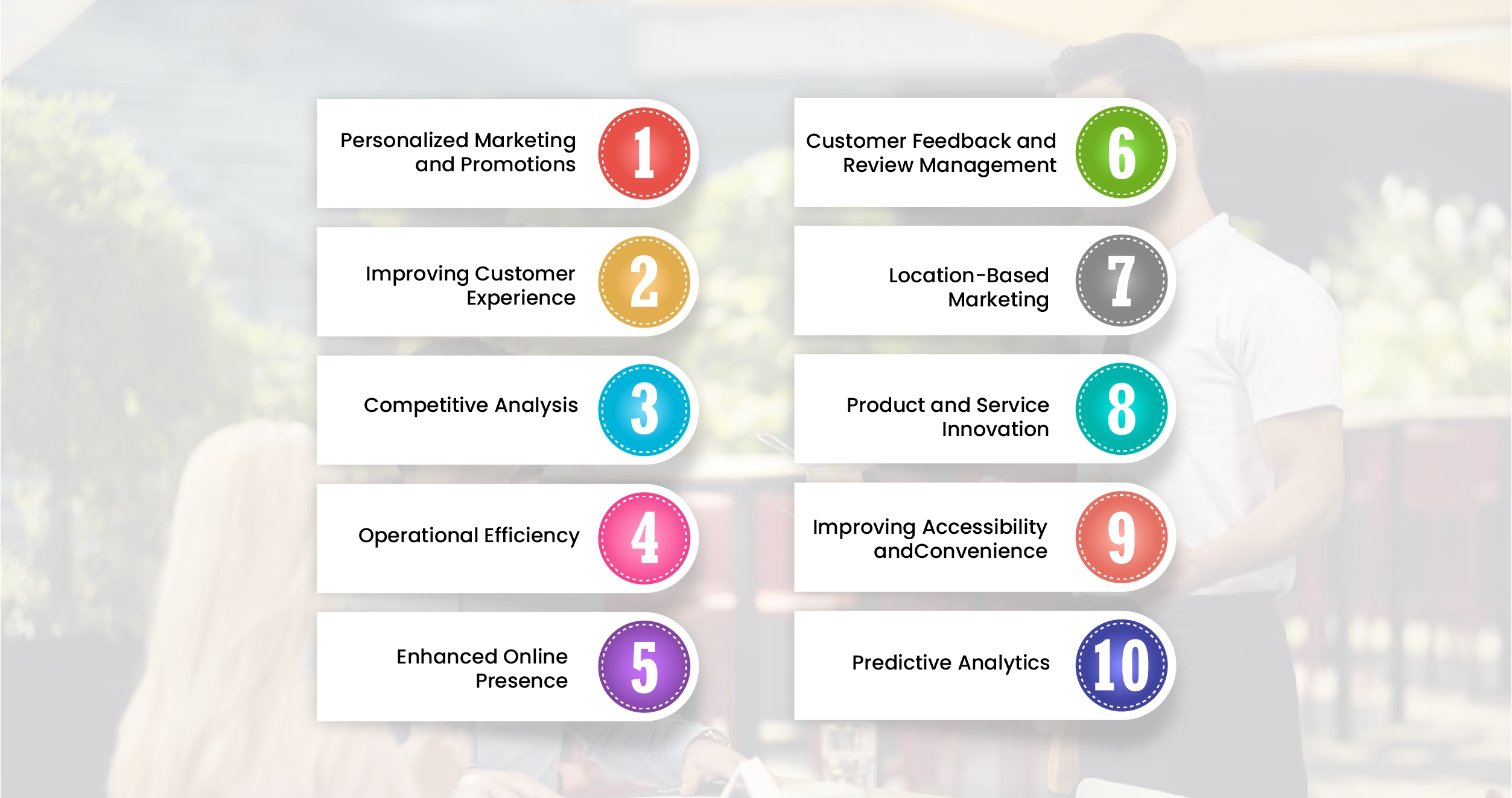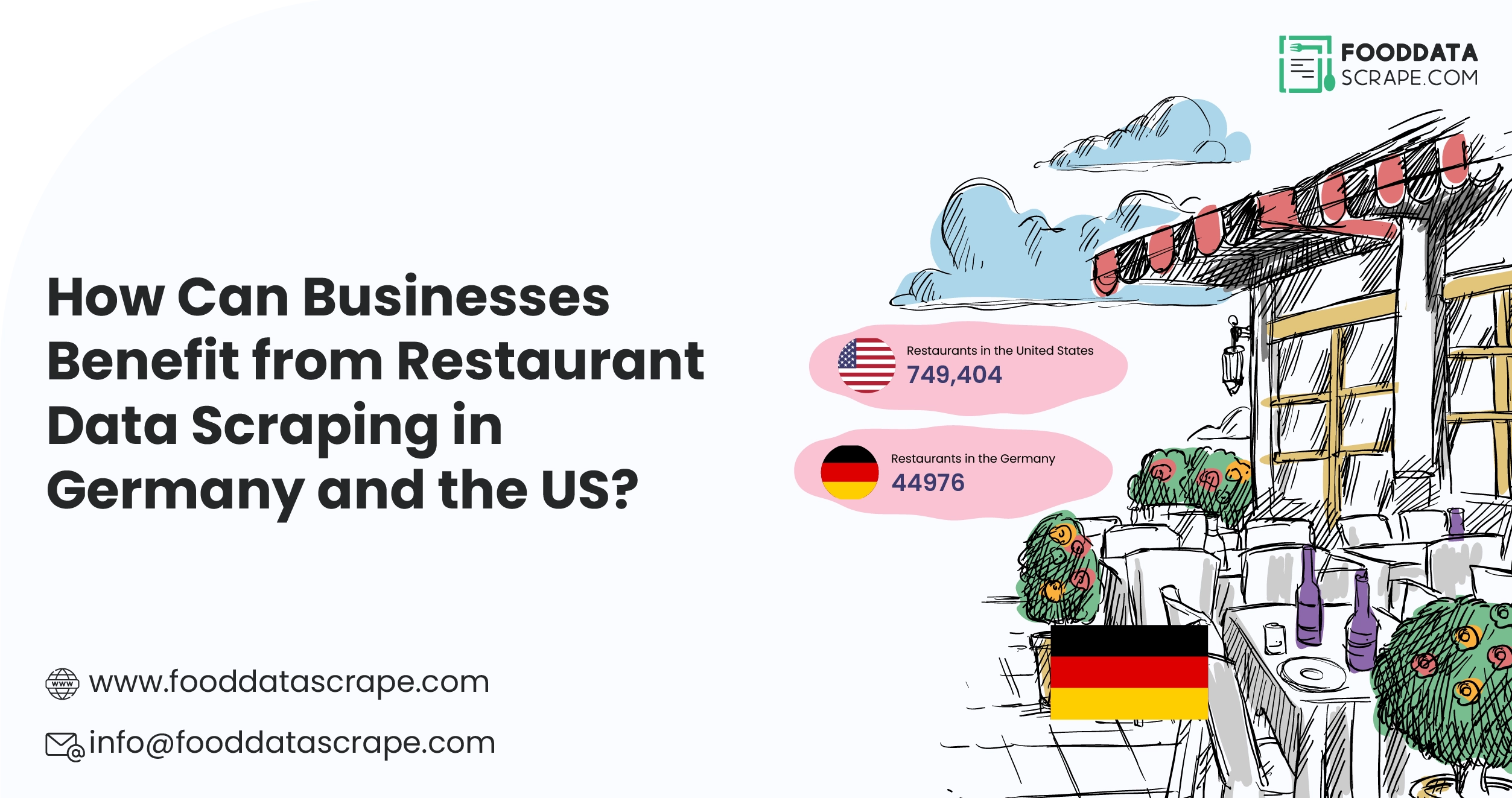The growth of restaurant data scraping in Germany and the US is attributed to the increasing importance of integrated analyses of the dynamic growth of the food and dining businesses. The ever-growing popularity of technology-related dining options has made the amount of information available online priceless for restaurant owners, marketers, and analysts. The restaurant data scraping services help aggregate essential information, including menus, prices, customer reviews, and hours of operation from restaurant websites and reviews. From this data, organizations can determine market niches and customer demands and change their services to meet the current market demands. In the case of Germany, due to the focus on regional foods and delivery services, data scraping is critical to capturing local tastes and periodic fluctuations.
The restaurant system in the US is extensive and diverse, so it is crucial to scrutinize the competition. Through food delivery scraping API services, the stakeholders in both countries can benefit from making better decisions, improving the overall customer experience, and unlocking more opportunities within the ever-evolving restaurant industry.
What Types of Data are Collected on Scraping Restaurant Data?

While scraping restaurant data, different data are gathered to understand the mining sector better. These data types include:
- Menu Items: Information on the specific dishes, including their descriptions, ingredients, serving sizes, and availability for special requirements (e.g., vegan, gluten-free).
- Prices: Menu prices, sizes, prices of products in combos, current promotions, special offers, and seasonal promotions.
- Customer Reviews: Comments and ratings from customers that reflect their opinions on the quality of the food being served, the services offered, the atmosphere, and the experience at the place.
- Operational Hours: Business hours include operating hours during the week and different opening/closing times during weekends and holidays.
- Location Details: Directions to the restaurant are from the nearest landmarks and different modes of transport.
- Contact Information: Phone numbers, email addresses for reservations and inquiries, and social media pages for customer service.
- Restaurant Photos: Pictures and videos of the restaurant's interior and exterior, menu offerings, and occasions are used to create an image of the restaurant among potential clientele.
- Cuisine Type: The food served in the restaurant pertains to a specific country or region, a combination of two or more, or a particular food.
- Special Features: Data concerning the availability of outdoor dining, delivery/pickup, online ordering, Wi-Fi services, and accessibility.
- Popularity Metrics: Popularity indices of the restaurant, including the number of reviews, average rating, and positions in the food review sites.
- Chef and Staff Information: Information about the executive chefs and other employees, as well as their experience, specialization, and achievements.
- Company Data: This includes the name of the company that owns the restaurant, the type of business entity, and the type of business association.
- Business Address: The street, city, state, and zip code of the particular address.
- Corporate Contacts: Phone numbers, electronic mail addresses, and the corresponding people who should be contacted concerning business-related issues.
- Franchise Information: This section includes whether the restaurant is affiliated with any franchise, franchise contacts, and details on a specific franchise.
Web Scraping Food Delivery Data helps businesses obtain critical insights into the restaurant industry, improve their competitive positioning, and make effective decisions using up-to-date data.
How Can Business Leverage Scraped Data to Increase Customer Influx and Retain Old Customers?

There are several ways through which businesses can apply the scraped data concept to attract more customers and keep the old ones. Here are some key ways to utilize the data effectively:
1. Personalized Marketing and Promotions
Targeted Campaigns: Restaurant data scraping in Germany and the US allows for developing targeted marketing messages specific to customers' preferences and tendencies. For instance, coupons on preferred dishes or exclusive offers on the customer's birthday.
Loyalty Programs: Adopt and expand purchased loyalty schemes depending on the frequency and past buying habits. Loyalty should be compensated with loyalty programs such as special promotions or previews of new products and services.
2. Improving Customer Experience
Menu Optimization: Identify a customer database and employ food delivery data scraping services to enhance the menu by frequently adding more popular and less preferred items. Include products and services relevant to the changing season or popular among consumers.
Service Enhancements: Maximize reviews and feedback to discover areas that need service delivery enhancements. Pay attention to frequently reported issues and educate waiters and other personnel to make dining more enjoyable.
3. Competitive Analysis
Price Benchmarking: Check the price control of your products and services to conform to the market price that your competitors offer. Lower the prices or introduce new added-value services to attract such customers.
Trend Analysis: See what trends your competitors are employing and use those in your business. This could include favorite foods, newly introduced services or products, or effective marketing methods.
4. Operational Efficiency
Inventory Management: Factors that affect the demand for foods served are applied to accurately forecast the demand for various foods. Hence, the plan is to have a proper inventory to minimize wastage and keep foods in high demand and constantly available.
Staff Scheduling: USA restaurant database scraping helps determine periods of high demand and customer traffic and adequately manages staffing. This means one can provide the best service during peak hours and save money during low times.
5. Enhanced Online Presence
SEO and SEM: Utilize keywords and customers' search history to boost your restaurant's online presence through SEO and SEM.
Social Media Engagement: Take advantage of the information received from social media interactions to create content that will appeal to the readers. Engage the clients by replying to their reviews and feedback to create a positive reputation.
6. Customer Feedback and Review Management
Real-Time Monitoring: Organize a system enabling the firm to track and engage with customer reviews as they are posted online. Responding to negative feedback ensures that the customer who complained becomes loyal.
Feedback Loop: Affect and prompt customers to give their comments and feedback. The collected data must be utilized to modify products and services consistently to provide customers with signs that their input is appreciated.
7. Location-Based Marketing
Geo-Targeting: Use geolocation to provide customers with exclusive deals that can be redeemed at your restaurant. For instance, promotional offers may be specific to the working population, with lunch breaks around lunchtime, or neighborhood residents.
Event-Based Promotions: Introduce restaurant offers related to essential occasions or festivals in the region.
8. Product and Service Innovation
Customer Preferences: Use the gathered information to identify new products or services in response to the changing customer demands. These may include new foods and drinks to offer, ways of food delivery, and unique dining experiences.
Market Gaps: Find out what type of restaurant is lacking where you plan to establish it. This could include menus for specific diets, such as vegan or gluten-free, or specific rare food experiences in your region.
9. Improving Accessibility and Convenience
Online Ordering: Improve online ordering applications based on customers' opinions to make them more straightforward and less time-consuming. This may also attract customers who need the store more from home or the workplace during the day.
Delivery and Takeout: Improve delivery and takeout services based on the delivery time, delivery items preferred by customers, and customer satisfaction with these services. Integrate popular delivery apps to expand the target market.
10. Predictive Analytics
Forecasting Trends: Apply information technologies to predict meal consumption and buyer preferences. This could be useful for planning promotional events and menu changes sufficiently ahead of time.
Customer Retention Strategies: Create various solutions based on customer profiles, which can be created using predictive models of the identified customers. Promote campaigns like reselling these customers based on their preferences, incentives, or even browse-based rewards.
Consequently, restaurant data mining services in Germany and the US allow them to provide better solutions to improve customer satisfaction, reduce operational costs, and help restaurants attract and retain as many customers as possible.
Conclusion: This makes restaurant menu data scraping a helpful technique on which food service businesses can rely for insights. Businesses can identify menu tendencies, pricing approaches, and customer inclinations by collecting restaurant data from Germany and the US. Marketing analysis can help restaurants improve the menu, market promotions, and their clients' experience. Additionally, extract restaurant data from Germany and the US to gain a competitive advantage and offer new trends and demands in the restaurant business. In the growing digital environment, using techniques such as menu data scraping can significantly enhance a restaurant's potential in generating new consumer traffic and keeping the old ones returning to the restaurant, maximizing the restaurant's growth and profitability in a highly competitive market.
Are you in need of high-class scraping services? Food Data Scrape should be your first point of call. We are undoubtedly the best in Food Data Aggregator and Mobile Restaurant App Scraping, and we render impeccable data analysis for strategic decision-making. With a legacy of excellence as our backbone, we help companies become data-driven, fueling their development. Please take advantage of our tailored solutions that will add value to your business. Contact us today to unlock the value of your data.
























































































